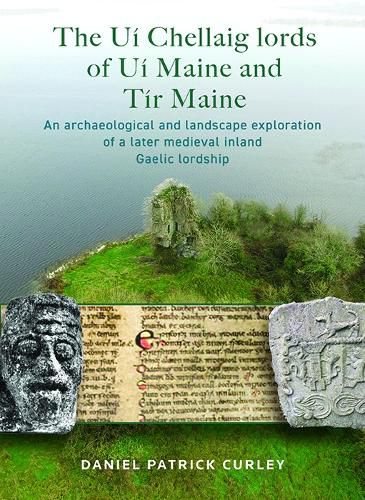Readings Newsletter
Become a Readings Member to make your shopping experience even easier.
Sign in or sign up for free!
You’re not far away from qualifying for FREE standard shipping within Australia
You’ve qualified for FREE standard shipping within Australia
The cart is loading…






The O Cellaig (O' Kelly) lordship of Ui Maine and Ti r Maine was a substantial political territory and influential cultural power in later medieval Connacht. This book identifies and reconstructs the physical appearance of the major O Cellaig lordly centres from their emergence as one of the principal offshoots of the Ui Maine in c.1100, to the demise of the lordship around the year 1600. It begins with an historical background, which helps to identify the lordly centres (cenn a iteanna), and define the shifting physical boundaries of this territory through the period. The later medieval physical environment is then reconstructed, with an exploration of the resources and economic conditions which underpinned this inland Gaelic lordship. Thereafter, the focus moves to inspect these cenn a iteanna, their siting, forms and surrounding cultural landscapes. In doing so, the writer investigates a broad range of settlement forms, including the continued use of crannO ga and promontory forts, before turning to the tower house castle. This book tackles important themes in later medieval Gaelic society and its physical expression, through the lens of these eastern Connacht lords.
$9.00 standard shipping within Australia
FREE standard shipping within Australia for orders over $100.00
Express & International shipping calculated at checkout
The O Cellaig (O' Kelly) lordship of Ui Maine and Ti r Maine was a substantial political territory and influential cultural power in later medieval Connacht. This book identifies and reconstructs the physical appearance of the major O Cellaig lordly centres from their emergence as one of the principal offshoots of the Ui Maine in c.1100, to the demise of the lordship around the year 1600. It begins with an historical background, which helps to identify the lordly centres (cenn a iteanna), and define the shifting physical boundaries of this territory through the period. The later medieval physical environment is then reconstructed, with an exploration of the resources and economic conditions which underpinned this inland Gaelic lordship. Thereafter, the focus moves to inspect these cenn a iteanna, their siting, forms and surrounding cultural landscapes. In doing so, the writer investigates a broad range of settlement forms, including the continued use of crannO ga and promontory forts, before turning to the tower house castle. This book tackles important themes in later medieval Gaelic society and its physical expression, through the lens of these eastern Connacht lords.